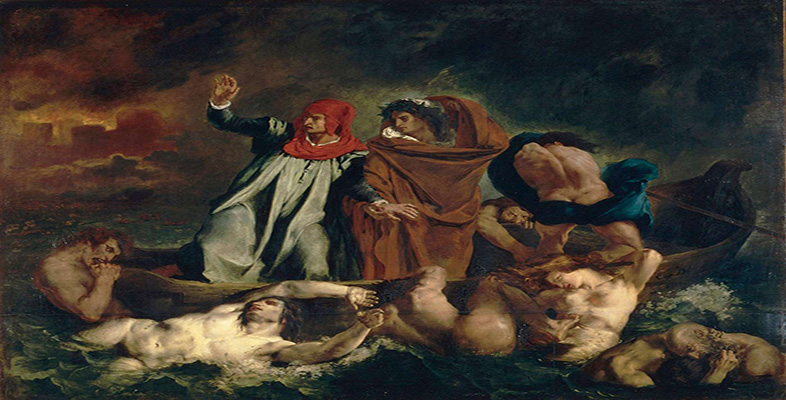5.5 The Gothic, the grotesque and artistic expression
The Gothic and the grotesque replaced classical reason, order and regularity with the irrational, the irregular and the deformed. Delacroix was drawn to them as a means of breathing new life into artistic expression. He was attracted to English and German literature, particularly Shakespeare and Goethe – because, to the unified, clearly defined aesthetic categories of the classical, they opposed the fractured and hybrid genres less susceptible to categorisation of any kind. Shakespeare mixed tragedy with comedy, and both he and Goethe, in some of their work at least, mixed beauty with the grotesque. The term ‘grotesque’ had originated as a means of describing the ornamentation discovered, during the Renaissance, in Roman grottoes. Originally it was coined in connection with ornate, fantasy figures, a mix of the real and the imaginary. To the enlightened, neoclassical architect Robert Adam, the grotesque was ‘that beautiful light stile of ornament used by the ancient Romans, in the decoration of their palaces, baths and villas’ (from The Works in Architecture of Robert and James Adam, Esquires (1778–1822), quoted in Eliot and Whitlock, 1992, vol.I, p.228) – in other words, a source of elegance. Then the term acquired connotations of the extravagant or ridiculous. Hugo meant by it anything strange, monstrous, ridiculous, comic, deformed, physically or morally ugly. To the Romantics of Delacroix’s generation, the grotesque allowed them to cross traditional boundaries of the comic and the tragic in a way reminiscent of Mozart’s Don Giovanni, a hybrid made up of opera seria and opera buffa. Its mix of the real and the theatrical, the extravagant and the serious also recalls the Gothic, neoclassical and exotic hybridity of the Royal Pavilion at Brighton, although this building (along with the equally heterodox poem Lallah Rookh by Thomas Moore) lacked the dark, satanic overtones often incorporated into the grotesque by French Romantics.
